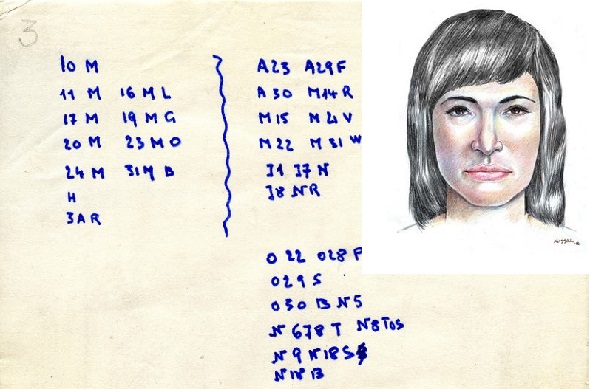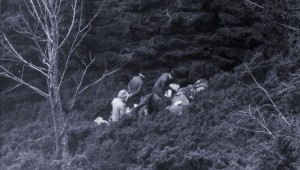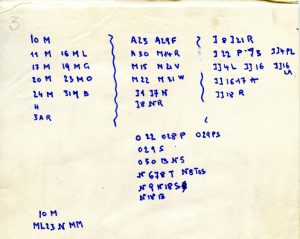The Isdal woman and her coded message (2)
The coded notes of the Isdal woman, whose body was found in 1970, have not yet been fully deciphered. It is possible that the unknown woman announced her death in code.
On November 29, 1970, a half-burned woman’s body was found on a hiking trail in Isdal (“Ice Valley”) near Bergen, Norway. She was never identified. Whether it was a murder or suicide was never clarified.
I went into the story of the Isdal woman in detail the day before yesterday. There is a whole series of Youtube videos about it, most of which have videocast character. Here, for example, is a German contribution by Kati Winter:
If you prefer English, you can find a similar video here. Unfortunately, I have not found a TV documentary about the Isdal woman on the Internet.
The cryptogram
The case of the Isdal woman reminds of that of the Somerton man. Like the latter, the unknown dead woman left a coded note. It is the following record:
I have blogged about this cryptogram several times. It is deciphered to a large extent. For example, the BBC website has the following (though not complete) explanation:
Watch the video below for more information (8:05):
In the video, reference is made to a document by journalist Michael East that provides a detailed explanation of the memo. Does any reader know where to find this?
So the note is a table listing dates and whereabouts – an itinerary. Instead of whole words like “Oslo,” “Bergen,” or “March,” the Isdal woman has used only the initial letters in each case. This method is called abbreviation ciphering in my recent book, Codebreaking: A Practicle Guide. This is not encryption in the true sense, but it is often used for secrecy.
One problem with an abbreviation cipher is that you usually can’t decode it unambiguously. For example, an M can stand for “March”, “May”, “Wednesday” or something completely different. This problem also plays a role in the Isdal woman’s note. So, while you can decode the months correctly with the background knowledge you have, you can’t always do it with the cities. So A could stand for Aarhus or Amsterdam. Whether R stands for Rome, Rotterdam or Reims is also not clear.
The block at the bottom left
Blog reader Lawrence Alexander pointed out to me that especially the block at the bottom left of the note is still puzzling:
10 M ML23 N MM
Lawrence wrote me the following about it:
It appears to “frame” the Isdal woman’s known activities from beginning to end, mirroring the 10M at the top, to the date she was last seen alive, 23N. I did wonder whether, in the context of a transmitted message, this was actually error detection framing the very start and very end of the message (like metadata), with the end portion for some reason missing. But that, again, is speculation and quite unlikely.
Some believe MM refers to “memento mori.” But considering that the Isdal woman previously uses J to represent June then JJ for July, I think it simply distinguishes another word beginning with “m” from the previous “10M” (March).
On that topic, it’s interesting that she uses JJ instead of, say, JY or JT. She could perhaps be trying to avoid linkage with French, German or English language, or (as others have mentioned) it could refer to the Slovenian “julij”. Given her apparent knowledge of the Slovenian “žarne” to accompany her Ljubljana persona, a connection to that country is certainly possible.
Die Vermutung, dass MM für “memento mori” (“Gedenke des Todes”) steht, wird auch im obigen Video (10:25) geäußert. ML könnte “mane lunae” (“Montagmorgen”) heißen. Dies ergäbe für die letzte Zeile:
Montagmorgen, 23. November, gedenke des Todes.
November 23, 1970 was indeed a Monday. On that day, the Isdal woman was last seen leaving a hotel in Bergen. On the same day, the lady’s suitcases were left at the luggage office at the Bergen train station. So this could be the day of the Isdal woman’s death. Did she announce her suicide in the note?
According to Lawrence, MM could also simply stand for the month of May. What do my readers think?
A few days ago I came across another (alleged) cryptogram that plays a role in connection with the Isdal woman.
If you want to add a comment, you need to add it to the German version here.
Follow @KlausSchmeh
Further reading: The Isdal Woman mystery, revisited
Linkedin: https://www.linkedin.com/groups/13501820
Facebook: https://www.facebook.com/groups/763282653806483/






Letzte Kommentare